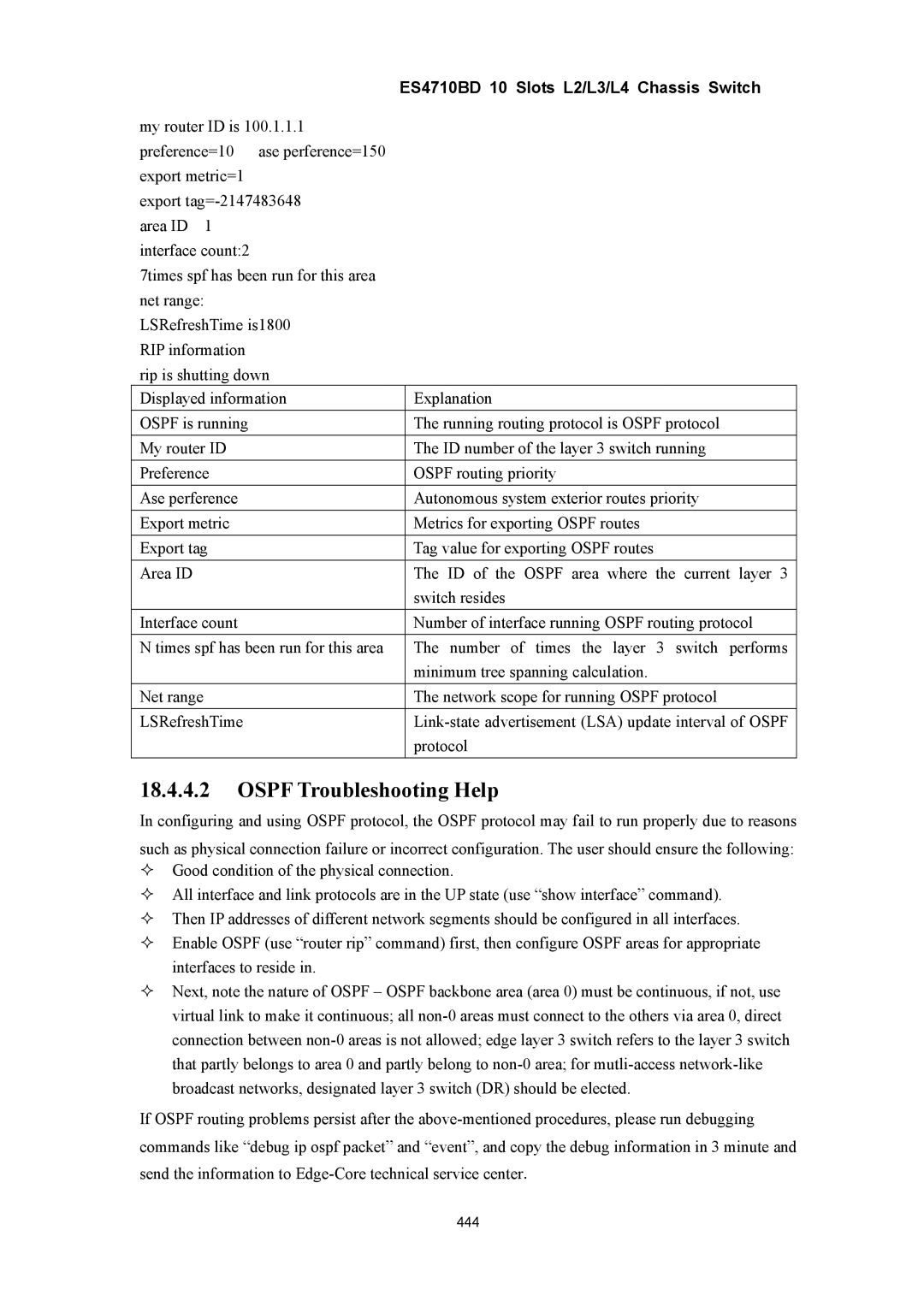ES4710BD 10 Slots L2/L3/L4 Chassis Switch
my router ID is 100.1.1.1 | |
preference=10 | ase perference=150 |
export metric=1 |
|
export | |
area ID 1 |
|
interface count:2 |
|
7times spf has been run for this area | |
net range: |
|
LSRefreshTime is1800 | |
RIP information |
|
rip is shutting down | |
Displayed information | Explanation |
OSPF is running | The running routing protocol is OSPF protocol |
My router ID | The ID number of the layer 3 switch running |
Preference | OSPF routing priority |
Ase perference | Autonomous system exterior routes priority |
Export metric | Metrics for exporting OSPF routes |
Export tag | Tag value for exporting OSPF routes |
Area ID | The ID of the OSPF area where the current layer 3 |
| switch resides |
Interface count | Number of interface running OSPF routing protocol |
N times spf has been run for this area | The number of times the layer 3 switch performs |
| minimum tree spanning calculation. |
Net range | The network scope for running OSPF protocol |
LSRefreshTime | |
| protocol |
18.4.4.2OSPF Troubleshooting Help
In configuring and using OSPF protocol, the OSPF protocol may fail to run properly due to reasons such as physical connection failure or incorrect configuration. The user should ensure the following:
Good condition of the physical connection.
All interface and link protocols are in the UP state (use “show interface” command).
Then IP addresses of different network segments should be configured in all interfaces.
Enable OSPF (use “router rip” command) first, then configure OSPF areas for appropriate interfaces to reside in.
Next, note the nature of OSPF – OSPF backbone area (area 0) must be continuous, if not, use virtual link to make it continuous; all
If OSPF routing problems persist after the
444
